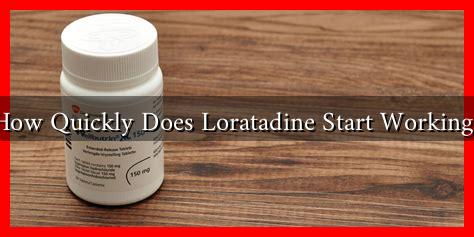-
Table of Contents
How Quickly Does Loratadine Start Working?
Loratadine, commonly known by its brand name Claritin, is a popular antihistamine used to relieve allergy symptoms such as sneezing, runny nose, and itchy eyes. As seasonal allergies affect millions of people worldwide, understanding how quickly loratadine works can help individuals manage their symptoms effectively. This article delves into the pharmacokinetics of loratadine, its onset of action, and factors that may influence its effectiveness.
Understanding Loratadine
Loratadine is a second-generation antihistamine that selectively blocks peripheral H1 receptors, which are responsible for allergic reactions. Unlike first-generation antihistamines, loratadine is less likely to cause sedation, making it a preferred choice for many allergy sufferers.
Onset of Action
One of the most common questions regarding loratadine is, “How quickly does it start working?” The onset of action for loratadine is generally within:
- 1 to 3 hours after oral administration
- Peak effects typically occur around 8 to 12 hours
Clinical studies have shown that loratadine can significantly reduce allergy symptoms within the first few hours of ingestion. For instance, a study published in the *Journal of Allergy and Clinical Immunology* found that loratadine effectively alleviated symptoms of allergic rhinitis in patients within 1 hour of taking the medication.
Factors Influencing Onset Time
While loratadine generally works quickly, several factors can influence how soon a person may feel relief:
- Dosage: The standard adult dose is 10 mg once daily. Higher doses may lead to faster relief but should only be taken under medical supervision.
- Formulation: Loratadine is available in various forms, including tablets, liquid gels, and syrup. Liquid formulations may be absorbed more quickly than tablets.
- Individual Metabolism: Each person’s metabolic rate can affect how quickly the drug is processed in the body. Factors such as age, weight, and liver function play a role.
- Food Intake: Taking loratadine with food may delay its absorption slightly, although it does not significantly affect its overall effectiveness.
Case Studies and Statistics
Research has consistently shown the efficacy of loratadine in treating allergy symptoms. A meta-analysis published in *The Cochrane Database of Systematic Reviews* reviewed multiple studies and concluded that loratadine significantly improved symptoms of allergic rhinitis compared to placebo. The analysis indicated that:
- Approximately 60% of patients reported symptom relief within the first 3 hours.
- Over 80% experienced significant improvement within 12 hours.
These statistics highlight the rapid onset of action that loratadine offers, making it a reliable option for those seeking quick relief from allergy symptoms.
Conclusion
In summary, loratadine is an effective antihistamine that typically begins to work within 1 to 3 hours after ingestion, with peak effects occurring around 8 to 12 hours. Factors such as dosage, formulation, individual metabolism, and food intake can influence how quickly one experiences relief. For those suffering from allergies, understanding the onset of action can help in planning when to take loratadine for maximum effectiveness. Always consult with a healthcare provider for personalized advice and recommendations regarding allergy management.
For more information on loratadine and its uses, you can visit the National Center for Biotechnology Information.

